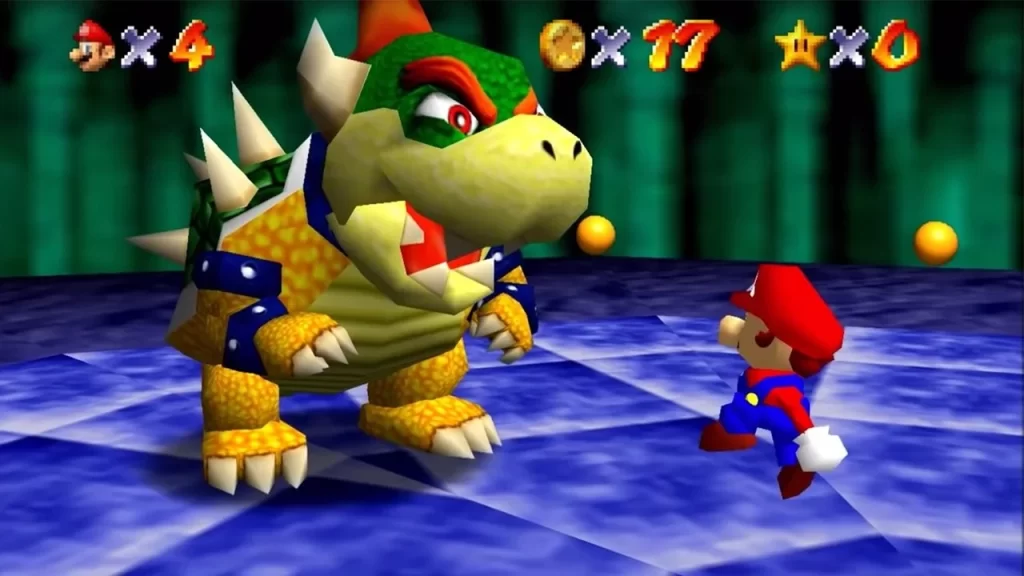What is a level designer? Level designers are the architects of virtual worlds, responsible for sculpting the landscapes, populating them with interactive elements, and orchestrating the flow of gameplay. They are, in essence, the storytellers of a game, using spatial design and gameplay mechanics to engage and immerse players in the game’s narrative.
Level design is a multifaceted discipline that encompasses a wide range of skills, from environment creation and gameplay flow to narrative integration and player experience.
It is a challenging but rewarding field, offering the opportunity to create unique and memorable worlds that players can explore and interact with.
This article will provide a comprehensive overview of level design, covering its essential elements, the role of level designers in the game development process, and the tools and technologies used to create immersive game worlds.
We will also explore the evolution of level design over the decades, highlighting the key trends and advancements that have shaped the field into what it is today.

What is a level designer?
A level designer is a key figure in the world of video game development responsible for creating the immersive environments, challenges, and experiences that players encounter within a game. They meticulously craft the physical spaces, gameplay flow, and narrative integration, ensuring a seamless and engaging player journey.
Level designers possess a unique blend of artistic creativity and technical expertise, shaping virtual worlds using tools like 3D modeling, scripting, and spatial design. Their role is crucial in delivering memorable gaming experiences, and their work continues to evolve as technology advances, pushing the boundaries of interactive storytelling and gameplay.
At its core, level design is a multifaceted discipline within the realm of game development that focuses on creating the environments, challenges, and experiences players encounter as they progress through a game. Level designers are the architects of virtual worlds, responsible for sculpting the landscapes, populating them with interactive elements, and orchestrating the flow of gameplay. They are, in essence, the storytellers of a game, using spatial design and gameplay mechanics to engage and immerse players in the game’s narrative.
The role in a nutshell
As we go further with the idea of explaining what is a level designer, we have to say that level designers are tasked with several key responsibilities that collectively contribute to the overall quality and enjoyability of a game:
You can say that the foundational aspect of level design involves creating the physical spaces and landscapes in which the game’s action takes place. This includes designing terrain and architecture, as well as setting the overall visual tone.

Level designers are also responsible for ensuring that the game’s progression is both challenging and engaging. They must design encounters, puzzles, and obstacles that fit seamlessly into the narrative, maintaining a sense of pacing and balance.
The level designers work closely with writers and narrative designers to ensure that the game’s story is effectively conveyed through the gameplay and environments. This might involve creating set pieces that reflect key story beats or designing environments that support the narrative.
To ensure the success of a game, the factor of player experience is essential, and crafting an enjoyable player experience is paramount. This is another task that belongs to the level designer. Level designers must consider factors like player immersion, navigation, and accessibility, ensuring that the game is approachable and enjoyable for a broad audience.
Level designers face the dual challenge of working within technical constraints to optimize game performance across different platforms and hardware configurations. Additionally, they frequently organize playtesting sessions to collect player feedback, using this valuable input to refine and improve their designs.
The art and craft of level design
Level design is as much an art form as it is a technical discipline. It blends creativity and artistic sensibility with a deep understanding of gameplay mechanics and player psychology. A talented level designer is, in many ways, a master storyteller who employs space and interactivity to convey emotions and ideas.
One of the most crucial aspects of level design is spatial design. Level designers must create environments that not only look visually appealing but also guide players intuitively. This involves considering the layout of spaces, the placement of objects, and the use of landmarks to help players orient themselves within the game world.
Level designers must also strike a delicate balance between linear and open-world design. Linear levels guide players along a predetermined path, ensuring they experience the narrative as intended. In contrast, open-world or sandbox environments offer freedom and exploration. Skilled level designers know when to employ each approach to enhance the player experience.
After that, understanding gameplay mechanics is essential for level designers. They need to have an in-depth knowledge of the game’s mechanics, such as character abilities, weapons, and AI behavior. This knowledge enables them to design challenges and puzzles that are not only fun but also suit the game’s core mechanics.

It is the job of a level designer to carefully consider the difficulty curve of a game. They typically start with simpler challenges and gradually introduce more complex ones as players progress. This ensures that players are continually engaged and motivated to overcome new obstacles.
And finally and beyond all that, successful level designers have a deep understanding of player psychology. They anticipate how players will react to different situations and design their levels accordingly. This might involve creating tension through environmental storytelling or providing moments of triumph and relief after challenging encounters.
How to become a level designer
Becoming a level designer is a rewarding journey for those with a fervent love for video games and a talent for melding storytelling and spatial design. These individuals hold a pivotal role in the gaming industry, responsible for crafting the immersive environments and stages that players traverse, ultimately defining the overarching gameplay experience.
To embark on the path of becoming a level designer, certain key steps are indispensable. While a formal education is not obligatory, many level designers possess degrees in game design, game development, computer science, or closely related fields. These educational programs furnish a solid foundation in the fundamental principles of game design, programming, and art.
With knowledge in hand, the next crucial step is assembling a comprehensive portfolio. This portfolio serves as a canvas to showcase one’s skills and ingenuity to prospective employers, comprising an assortment of projects ranging from personal endeavors to mods or custom levels developed using popular game engines.
Active involvement in the gaming community is another vital facet of this journey. Participation in modding communities, attendance at game development events, and engagement in online forums foster invaluable experience and connections with fellow industry professionals.

Subsequently, aspiring level designers can seek internships or entry-level positions at game development studios, offering hands-on experience and mentorship from seasoned experts. Ongoing learning remains imperative as the video game landscape evolves perpetually. To keep pace, aspiring designers should invest in additional courses, workshops, and participation in industry conferences.
Networking remains a linchpin for success in this competitive field. Attending industry events, reaching out to admired professionals via LinkedIn, and joining virtual forums and communities cultivate the relationships that can open doors in the dynamic realm of video game development.
Yet, perhaps above all, dedication and passion are the cornerstones of a level designer’s journey. By ardently following these steps and maintaining a commitment to personal growth, a world of opportunities unfolds within the ever-evolving tapestry of video game development.
The future of level design
Looking ahead, the future of level design promises exciting developments in tandem with technological progress:
As technology continues to advance, the field of level design will evolve in exciting ways. One possibility is the integration of procedural generation, where advanced algorithms enable level designers to construct vast and dynamic game worlds tailored to each player’s unique experience.
Additionally, artificial intelligence (AI) is poised to play a significant role, with AI-driven tools assisting designers in crafting more realistic and challenging gameplay by dynamically adjusting the game environment based on player behavior.
Moreover, the increasing accessibility of virtual reality (VR) technology will open up new avenues for level designers to create immersive and interactive experiences that blur the boundaries between the virtual and real worlds.
Finally, expect to see more cross-disciplinary collaboration as the lines between level design and storytelling, cinematography, and other creative fields continue to blur, resulting in even more emotionally impactful game experiences.

In conclusion
“What is a level designer?” This seemingly straightforward question unveils a world of creativity, technical prowess, and artistic expression. Level designers are the unsung heroes of the gaming industry, shaping the virtual worlds that captivate players worldwide. Their mastery of spatial design, gameplay mechanics, and storytelling principles allows them to craft immersive and unforgettable experiences.
As video games continue to evolve, so too will the role of the level designer, driving innovation and pushing the boundaries of what’s possible in interactive entertainment. So, the next time you embark on a virtual adventure, take a moment to appreciate the meticulous craftsmanship of the level designer — the architects of your gaming dreams.
With your newfound knowledge of what is a level design, you can dive headfirst into the exciting world of game development. At Main Leaf, we’re dedicated to keeping our clients at the forefront of the game industry. We’re here to support you in realizing your dream of creating your very own video game adventure. Contact us right now!

